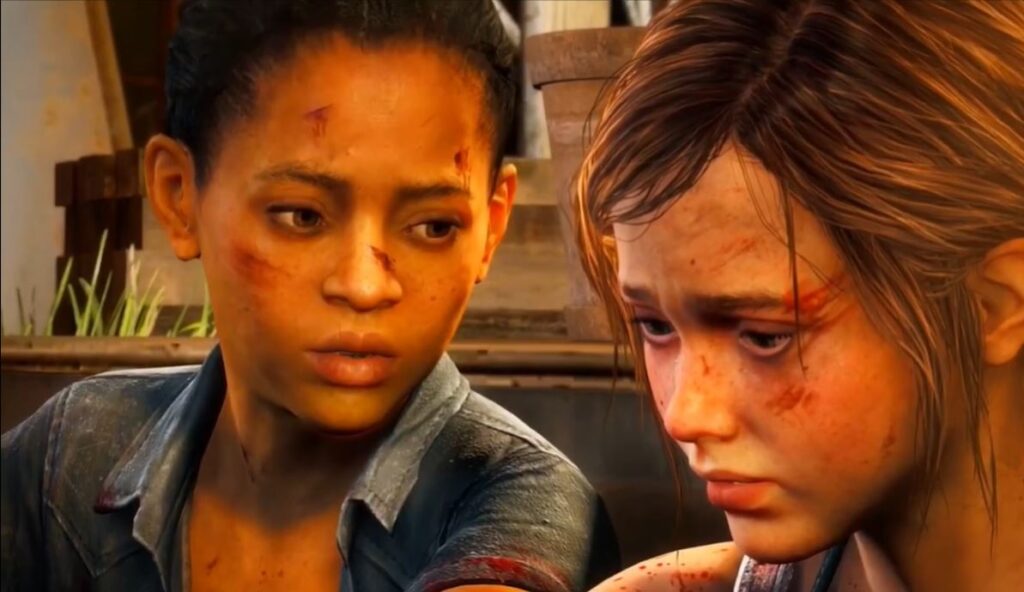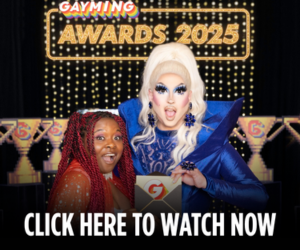The Last of Us TV Show should keep Riley alive
The Last of Us is a nail-biting, gritty rendition of the world in a post-apocalyptic state, overridden with parasitic fungi zombies. It’s akin to Nine Inch Nails’ ‘With Teeth’ being ceremoniously animated in some blood-stained ritual with large wooden spikes forming a circle around Neil Druckmann while he baptises Troy Baker in liquid nitrogen. It’s a bleak ol’ story, but one that has glimmers of optimism tucked underneath the rubber of those mucky tires. Yet, one of those cheerier elements was snuffed out like Joel was with a golf club. Naughty Dog succumbed to the age-old and terrible trope – Bury Your Gays. The Last of Us TV show adaptation can remedy that, and it absolutely should, by letting Riley live.
Bury Your Gays is when an LGBTQ+ character’s story either ends in tragedy or never truly begins, being killed off-camera like some red-shirt in The Walking Dead with no name. It either lets the writers ignore their identity altogether, or it paints the entire idea of being LGBTQ+ as something inherently tragic due to the oversaturation of this cliche.
It’s a cliche that ran rampant in the original The Last of Us DLC, Left Behind. Ellie, for context, had a girlfriend. The first game just didn’t show it much until the DLC, which you had to pay for to add further insult to injury. Ellie’s ex, Riley, died before we met her in-game. It’s in Riley’s death that Ellie discovered she was immune, and it led to her tremendous survivor’s guilt, completely overshadowing the importance of having a lesbian at the helm of one of the biggest zombie titles out there. Naughty Dog evidently learned from its mistakes in the sequel, but that means jack shit if they go right back to square one with the first game and do it all over again but to a much wider audience.
The fix is pretty simple, too. It’s not exactly a long-winded curveball that takes the narrative in a completely different direction. The person that dies when she gets bit, leading to her survivor’s guilt, showing Ellie that she is immune, doesn’t have to be her girlfriend. It can be a platonic friend she’s been jaunting around the rundown cityscapes with. It could be a sibling, a family member, anyone but her girlfriend. But that doesn’t mean Riley should be omitted from the narrative. On the contrary, it means she should play a larger role.
Riley was a Firefly, part of the anti-government rebellion that seeks to sink its teeth into the police state that’s been abusing its people under the guise of “protecting” them in the last bastions of civilization. We see faint apparitions of the Firefly’s existence throughout the first game, with the silhouette finally stepping in front of the curtain in the bombastic finale, but there are few characters to humanize them and show their motives and goals. They’re an interesting lot, but certainly need padding out to give that much-needed depth. Riley could have brought that to the empty table with nought but scraps, but she was too busy being dead.

The reel of The Last of Us is its tightly-wound bond between Joel and Ellie, the two people in the world who have lost everything, clinging onto each other to fill the voids that are sinking their hearts, a pseudo-daughter-and-father connection. Having Riley tag along would no doubt shatter that entire pull, just as having any character on the road with them would – the game circumnavigated as much when it killed off Tess as early as it did. That’s why I say she should be cast in a supporting role, someone who occasionally pops up whether it’s in flashbacks or at some point on Joel and Ellie’s journey, maybe even at the end when Joel completely loses it and unleashes hellfire upon those trying to right the wrongs of the world in his selfish act of macho glory.
Again, though, this is about avoiding that Bury Your Gays trope. If she appears alongside fellow Firefly’s at the penultimate point in the first game’s narrative, right before Joel’s deceptive manipulation, then she shouldn’t die. It’s a tough one to work out, and that’s why it’d likely be better if we saw Riley at a camp on the journey along the way and in flashbacks as Ellie reminisces about the past.
But having Riley still around presents a problem with the sequel and Ellie’s future relationships – or at least, it does at first glance. What happens with The Last of Us Part 2’s Dina? There’s an easy enough fix. With Riley being a Firefly and Ellie being on the road with Joel for so long, a wedge would naturally present itself. Being long-distance in today’s world with all the tech is hard enough, let alone in a dystopia where you don’t know if your better half is dead in a ditch somewhere or strutting about chomping into people’s faces like they’re tearing into some ribs drenched in bloody barbeque sauce.
Breaking up on mutual terms and being okay with it isn’t exactly ‘tragedy’ and so the trope is amended. The two get to go onto live happier lives with other people, still being bastions of LGBTQ+ representation, and that’s perfect. Riley still being around doesn’t negate Ellie’s character arc, her rich story of guilt and perseverance followed by that emptiness that comes with the failure brought about by Joel and his desperation to have a daughter. Riley being around adds to the Firefly’s story and let’s the writers do more with Ellie’s LGBTQ+ identity rather than sidelining it for the optional DLC that’s locked behind a paywall. Hell, maybe we can get those awkward dad moments with her talking to Joel a whole lot earlier. No matter how you frame it, Riley being alive is nothing but beneficial to the narrative, so let’s not kill her this time around, yeah?








